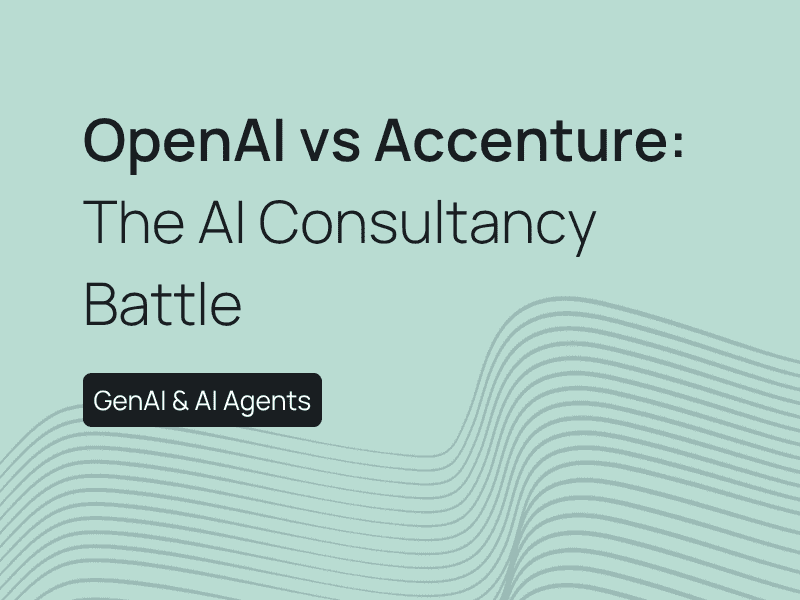AI is arguably the investment megatrend of the decade. Large language models (LLMs) are at the center of the action, driving billions in funding and reshaping industries. Yet behind the hype, a critical debate is playing out: which training paradigm self-supervised learning (SSL) or reinforcement learning (RL) offers the best long-term returns?
From where we stand, SSL is the undisputed engine of AI’s growth. It scales efficiently, dominates enterprise adoption, and powers the biggest breakthroughs in foundation models. RL, while exciting, remains more niche—great for refining AI decision-making but expensive and harder to scale. The market is pouring money into AI, but smart capital flows to technologies with real-world traction, not just theoretical promise. Understanding where SSL and RL create tangible value is key to grasping the broader dynamics of the AI field.
Self-Supervised Learning: Scaling Intelligence Efficiently
Self-supervised learning (SSL) is an advanced machine learning technique that trains models on large amounts of unlabeled data, enabling the development of general-purpose intelligence. This approach has gained significant traction in recent years due to its ability to scale efficiently and reduce reliance on human-labeled datasets.
SSL has proven highly effective in creating foundation models like OpenAI's GPT-4, Google's Gemini, and Meta's Llama, all of which are driving widespread enterprise adoption across various industries. Its scalability and ability to extract meaningful patterns from vast amounts of unstructured data make it particularly appealing for investment.
Industry Applications and Investment Appeal
The commercial viability of SSL is especially strong in data-rich sectors. For instance, in healthcare, SSL models can analyze medical images and electronic health records to aid in diagnosis and predict patient outcomes. A leading example is Google's DeepMind, which uses SSL-powered models to detect diseases with greater accuracy than human doctors.
In the automotive industry, SSL is advancing autonomous vehicle technology by enabling vehicles to recognize and anticipate road conditions and traffic patterns. Tesla and Waymo are leveraging SSL to train self-driving models using real-world data streams without the need for extensive manual annotation.
The financial sector has also seen the benefits of SSL, with investment firms deploying AI models trained on vast amounts of market data to detect patterns, predict asset price movements, and enhance algorithmic trading strategies.
Risks and Challenges
The computational costs associated with training large-scale SSL models can be substantial, often requiring multi-million-dollar investments in hardware infrastructure. Also, concerns about diminishing returns have surfaced as models continue to scale up in size and complexity, raising questions about long-term sustainability.
Reinforcement Learning: Fine-Tuning for Precision and Adaptability
Reinforcement learning (RL) is a powerful machine learning technique that optimizes decision-making through trial-and-error feedback loops. It enables AI systems to learn optimal behaviors by interacting with their environment and receiving rewards or penalties based on their actions.
Industry Applications and Investment Appeal
RL's appeal lies in its ability to enable task-specific expertise and adaptability. This makes it particularly valuable for aligning AI systems with human preferences, as seen in the use of Reinforcement Learning from Human Feedback (RLHF) in fine-tuning chatbots like ChatGPT. RL is also finding applications in robotics, finance, and autonomous systems.
In finance, RL is being used to optimize investment portfolios and trading strategies. A recent study showed that RL-based trading algorithms can increase returns by an average of 12% without a corresponding increase in risk. Hedge funds and high-frequency trading firms have been early adopters, leveraging RL to optimize order execution and risk management.
In robotics, RL is essential for training robotic arms in manufacturing, enabling them to refine motor skills through repeated practice. Companies like Boston Dynamics and Nvidia have integrated RL to improve real-world performance in automation and logistics.
Challenges and Risks
Unlike SSL, which can process vast amounts of existing data, RL requires an environment to interact with, making data collection and training significantly more resource-intensive. The computational demands can be prohibitively high, slowing down deployment and adoption. Furthermore, RL-trained models often struggle with generalization, meaning their decision-making abilities may not transfer well to new or slightly different environments.
Which Model Holds Greater Investment Potential?
According to industry specialists, SSL appears to hold greater investment potential compared to RL in the near term. There are two key reasons for this:
- SSL is experiencing more rapid growth and widespread adoption across industries due to its ability to process large amounts of unstructured data without manual labeling.
- Major tech companies, including Google, Apple, and Microsoft, are investing heavily in SSL research and development, indicating strong commercial viability.
While RL offers advantages in specific, high-value applications, it generally faces greater technical and resource constraints compared to SSL.
The Optimal Bet in AI’s Future
We see SSL leading the charge in AI's commercial success. While RL offers value in specific domains, SSL's broader applicability gives it an edge for investors.
We've observed SSL's impact across various industries, from healthcare to finance. Its ability to leverage vast amounts of unlabeled data has made it indispensable for many AI applications. The projected growth of the SSL market to $171.0 billion by 2032 underscores its potential.
RL, while powerful for tasks like robotics and game-playing, faces more significant challenges in scaling and resource requirements. It excels in specific scenarios but often demands more computing power and data to achieve results.
Looking ahead, we believe the most successful AI systems may combine both SSL and RL approaches. However, for current investors, SSL presents a more compelling case. Its scalability, cost-effectiveness, and broad adoption make it an attractive option for those looking to capitalize on AI's future.
Published by Samuel Hieber


